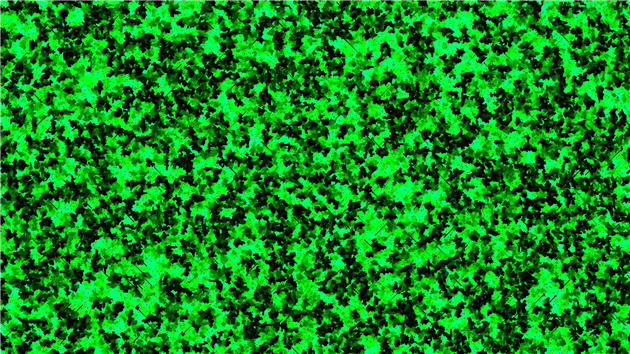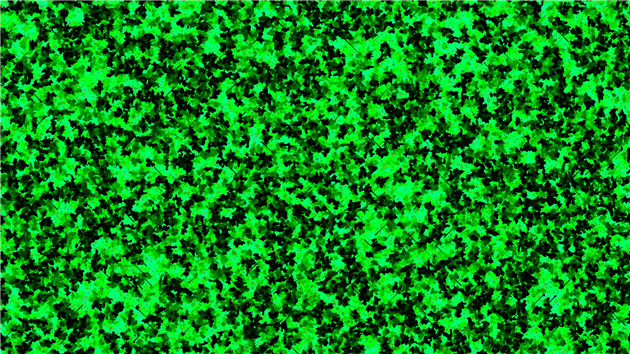Life, Non-locality and the Simulation Hypothesis
Conway's Game of Life is a cellular automaton where simple rules lead to surprisingly complex behavior. You can even build a Turing Machine in it. Life consists of a grid of cells which are either alive or dead. For each generation a cell flips from dead to alive if it has three alive neighbors. If a cell is alive and has two or three neighbors then it survives to the next generation, otherwise if dies. When programming a non-infinite Life game it's common to wrap the logic at the extent of the grid - so the some 'neighbors' of the cells at the very top are the cells at the very bottom and so on.
Imagine that you discover such a system and try to figure out the physics of it.
After observation of a sample of cells you'd figure out the rules that govern the life and death of most cells. You'd also figure out a speed of 'light' for the system - information can only travel one cell per generation. The state of cells further away have no influence. You've got a kind of classical physics of the Game of Life.
Further study would throw up a puzzle though. Cells at the extremes of the system are influenced by cells at the other extreme. In some cases the speed of 'light' is violated - you now have a non-local physics in the mix. At this point you might fix the problem with geometry - maybe the grid is actually wrapped around a torus (even though you're looking at a rectangular grid). This makes the system logically consistent again but it's wrong - the non-local behavior occurs because you're trying to analyze a simulation.
In quantum physics observing the state of a property on one particle in a pair of entangled particles will instantly effect the observation of that property on the other particle, no matter the distance between them. This is Einstein's spooky action at a distance. It seems like it can't possibly be true, but has been demonstrated repeatedly (and quite spectacularly using starlight to select which property to measure).
There are many different interpretations of how to understand quantum physics. But as you might expect from physicists these concern themselves with a physical universe (or multiverse depending on the flavor). It's possible though that non-locality (and the apparant quantized nature of our reality) is trying to tell us something else. Non-local effects are entirely consistent with a reality that is being generated frame by frame, just like a souped up Game of Life.
Simulation Hypothesis Series
- Have we Already Proved that the Simulation Hypothesis is False?
- Can I move to a Better Simulation Please?
(Published to the Fediverse as: Life, Non-locality and the Simulation Hypothesis #etc #simulationhypothesis #conway How Conway's Game of Life illustrates non-locality and how this might be interpreted as evidence in favor of the simulation hypothesis when looking at non-locality in quantum physics. )
Game of Death
Conway's Game of Life, for 1,830 generations, starting from a random pattern. Instead of showing the live cells this animation focuses on death - each dead cell gets a little bit greener with each generation. You can just about make out a few static patterns in the darkness and the lines cruising through are left behind by gliders. Mostly though you're watching the horrible loss of life caused by cellular social isolation.
Related Posts
- Life, Non-locality and the Simulation Hypothesis
- Draw the rest of the Hummingbird
- Coronavirus Visualization Update
- The color of yesterday
- Stable Diffusion Watches a Security Camera - a short horror movie
(Published to the Fediverse as: Game of Death #timelapse #animation #conway #life #death #video Animation of Conway's Game of Life flipped to focus on the fate of the dead cells. )

